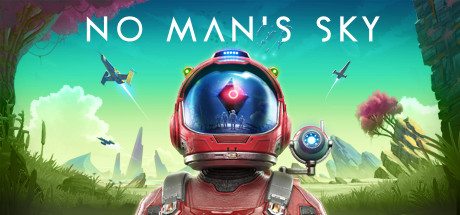
James Mackin, S@Y News.
Picture this. You walk into the stadium, past the concessions stands selling beer and hot dogs, and take your seat. You, and many other fans, are waiting for your favourite players to enter, and dominate this battlefield. They come out, to rapturous applause, and take their places. The announcer introduces everyone, sets it up, and starts the countdown.
3.
2.
1.
The players take their controllers, and they play.
You may have thought this was a description of a sports tournament. And you’d be right, because that is a description of a sports tournament. Esports, that is.
In an article by Hilary Russ for Reuters entitled, ‘Global esports revenues to top $1 billion in 2019,’ she defines esports as “a form of competitive video gaming with multiple players battling against each other, usually in teams, often in matches that are streamed live to throngs of young fans.” With sponsorship deals, cash prizes, and millions of adoring fans, esports is the latest form of evolution for the fastest growing medium of entertainment.

Video games have come a long way. From bouncing a tiny white square from different sides of the screen in Pong, to exploring the ever-expanding universe in No Man’s Sky. In the roughly 40 years the medium has been around, video games have grown to surpass their initial technological limits, and connect people around the world.


Ty Banfield is someone whose life has been changed by the evolution of video games. He is a 16 year old resident of Toronto, who dropped out of high school to pursue his passion of esports. Why give up education in pursuit of playing video games? Banfield says that he learned a very important lesson from gaming, which is dedication. “You can learn most of the stuff, if not more from video games than regular sports…a lot of dedication.” For Banfield, his life and career in esports is all about dedication. Dedication to practice, to your team, to your craft.
But how does he make money? “Basically you can either be competitive or you can be a content creator.” To be competitive is to play against others for cash prizes, and to hopefully rise to the level of sponsorships, of professional teams. As for a content creator, while that can involve multiplayer gaming, it often involves single-player gaming, which has consistently been the most common form of gaming throughout its history.

When video game creators realized there was a possibility for profit decades ago, many studios decided to develop narratives for their games. Give the player a character to identify with, a challenge to work through, and a goal to reach, and you’ll have a loyal customer. From raiding tombs as Lara Croft, to taking scores and rampaging through the streets with the various protagonists of Grand Theft Auto, narratives have helped the medium of video games grow. As games became more popular, synergies began to exist between various media. Film adaptations of video games, and video game adaptations of films proliferated, and increased the amount of players in the world.


The thing about esports however, is that it’s predominantly multiplayer gaming. There aren’t really narratives in multiplayer gaming, it’s just a bunch of people trying to kill virtual avatars, or score more points against their counterparts on the other end of the internet connection. So as esports begin to reign supreme in the medium of video gaming, where does that leave narrative gaming?
Caitlin Yu is the Director of Quality Assurance at Phoenix Labs, an independent multiplayer studio based in Vancouver. This studio focuses on shared experiences in gaming, with products such as Dauntless, a co-op action RPG (role playing game) available on all major consoles. Yu says that while multiplayer is a major and growing force in gaming, it’s not the only aspect of the medium. She thinks that with blockbuster single-player releases coming out soon like The Last of Us Part II, and the latest entry in the Elder Scrolls series, the hypes is still real. That said, she doesn’t think “single players games will be fully eclipsed, … but I do think multiplayer is going to become a lot more of a major focus.” Especially as several of these games have multiplayer components now.

For example, look at Grand Theft Auto. The series initially started as an environment in which you could drive around, running over any non-player characters you wanted. There was a minimal story, but as the graphics capability grew, so did the profits. And with the profits came more talent, more story-writing, and fully realized narratives became the norm with games like Grand Theft Auto III, and Vice City. As the series continued to evolve, a shared multiplayer element was released with both Grand Theft Autos IV and V, with the multiplayer element of V being hugely popular. And while the multiplayer element for the series was initially just shooting another players before they shot you, it has continued to evolve. Small narratives are released periodically with players partaking in heists across the environment.



With regard to the next major innovation, Yu thinks that one possible option could be cross-platform functionality. What that means is instead of games being released for specific hardware, say the Playstation 4 or the Nintendo Switch, games could be released on the cloud. Anyone can play, so long as they have a strong internet connection. Google tried this with a platform called Stadia, which sold minimal units, garnering several mixed reviews. She says, “I realize for economy and for market, some things need to be exclusive,… but it seems like a lot of players these days just want to play with each other.” Whether they’re playing against each other in esports, or just having fun in Animal Crossing, making it easier to play with friends seems to be the next major innovation.
Marshall McLuhan, a Canadian academic, famously said “the medium is the message.” What this means is that the medium dictates the content it provides, with different media telling different things. And no medium has evolved as much as video games. From a series of dots and lines only seen in your living room, to stories on your computer, to battles in maps with friends around the world, video games are the medium where the message frequently changes. So however you prefer to do so, game on.
If you want to hear a quick audio report on the same topic, then check out this radio report I did on it!
Check out some other articles by great journalists on video games as well!
Education in Video Games: http://www.senecajournalism.ca/bringing-games-into-the-classroom/
Technology in Video Games: http://www.senecajournalism.ca/video-games-is-t…ure-actually-now/
If you liked my work...
Follow me on Twitter!



Be the first to comment